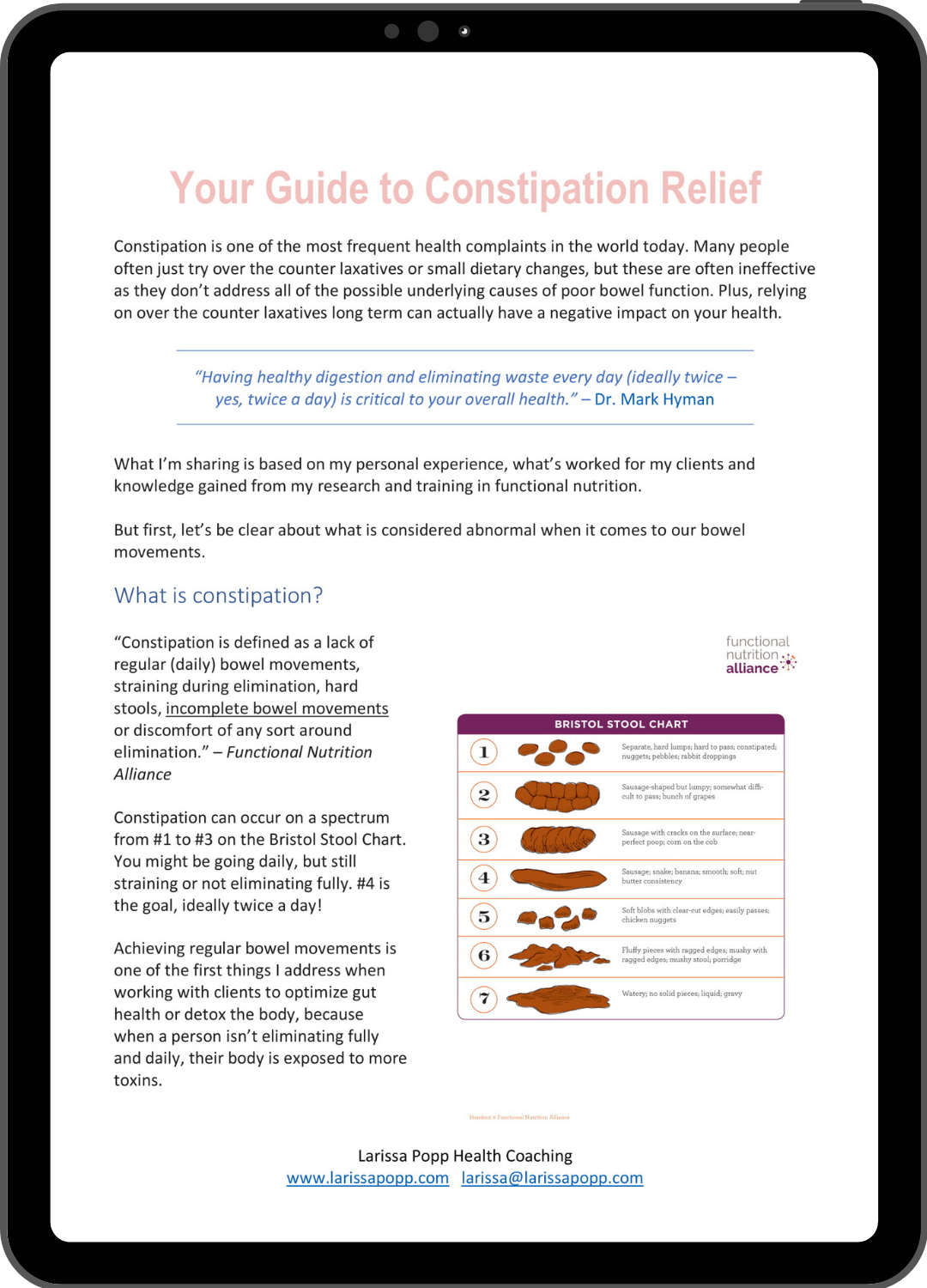Our gut is gaining increasing recognition for its significant role in our body, which is why I recently signed up for a functional nutrition training intensive all about digestion. I have gathered so many juicy nuggets of information that I am eager to share, because while the health of our gut is at the root of most health concerns it is often overlooked in conventional medicine. We are not simply what we eat; we are what we can digest, absorb and utilize. So, if your digestive system is functioning optimally, you aren’t getting all the nutrition that your food might have to offer.
I want to start by sharing one very easy strategy to optimize our digestion, which is so simple and so powerful, yet so often overlooked when it comes to problems with post-meal gas, bloating, indigestion, and fatigue.
To optimize your health and have more energy, CHEW your food more!
The simple act of chewing more can eliminate gas, bloating, abdominal discomfort – and fatigue (because the less energy required for digestion, the more energy there is to use elsewhere). Additionally, with optimal digestion, the energy from our food is getting where it needs to go.
Yes, it’s that simple, but read on if you want to fully understand how chewing plays such a significant impact on your digestion and post-meal energy levels. Often when we better understand how our body functions, we are more likely to adopt strategies to optimize our body’s systems.
You might also find that you eat less when you focus more on chewing (because your brain doesn’t get the signal that you’re full until after a lag of about 20 minutes) – which is why this has also proven to be effective in helping people lose weight. People also lose weight because by optimizing their digestion through chewing more, more of the nutrients from the food are getting to the cells. Overeating sometimes occurs because the cells aren’t getting what they need (which could be due to the consumption of nutrient deficient food, or due to poor digestion and assimilation of even nutrient-dense food).
Now, for those of you who enjoy learning about the connection between food and physiology, let’s explore chewing a little further.
When you take a bite of food, the digestion of that food begins in your mouth with chewing. Chewing mechanically breaks down our food into smaller and smaller pieces, expels air, and mixes the food with saliva. Saliva, with its enzymes, begins the chemical breakdown of our food. The longer food spends in your mouth, the easier digestion is on the rest of your body.
That was probably nothing new to you, but what you might not know is that the act of chewing also alerts the rest of your digestive system to get ready for the food coming its way, whereby more enzymes are released in the body and more hydrochloric acid (or HCL). This means that digestion in your stomach and small intestines will be compromised as well by not taking the time to chew your food well.
In addition, did you know that you also might need to chew your liquids? It can be very easy to quickly guzzle down a high-calorie smoothie, which means that you might not be getting the full benefit from what is hopefully a nutrient-dense drink. While a smoothie doesn’t need the mechanical breakdown that comes with chewing, it does still need the chemical breakdown that comes from mixing with our saliva and being exposed to more enzymes.
Here’s another interesting thing to note:
Heartburn is not a problem resulting from too much stomach acid, but instead from too little. Therefore, by taking antacids for heartburn you might treat the symptoms but you’re actually making the problem worse by further depleting stomach acid that’s already deficient. This is often the problem in conventional medicine today – we are treating the symptoms more often, rather than the root cause.
Your Action Step:
While you could simply pay more attention to how much you’re chewing during your next meal, and try to chew more, I suggest you do a one-week experiment where you focus more intentionally on both relaxing during meal time and chewing your food more.
It’s best if you actually keep a journal to write down any post-meal symptoms prior to starting the experiment, and then writing down how you feel after meals while trying these recommendations to become more fully aware of how chewing impacts your physiology. How much you need to chew depends on what you’re eating but start off trying to chew each mouthful of food at least 30 times to get used to what that feels like (and also chew your smoothies a little). Below is a step by step routine to follow to help you out.
Recipe for mindful eating and chewing to optimize your digestion:
- Remove any distractions prior to your meal (i.e. your phone, computer, the TV and any reading material), and if possible, light a candle or play soft music.
- Do some light stretching, then take a few deep breathes before you start eating. (This is especially important if you are feeling stressed because eating while stressed, on top of not chewing well, is a sure way to get a tummy ache; you might also wash your face before eating to help shift into a more relaxed state.).
- Express gratitude for your food.
- Place a bite of food in your mouth, then put your utensils down — and you might also find it helpful to place your hands together.
- Begin chewing and really savor the taste of the food.
- Concentrate on the act of chewing (try counting your chews for the first few bites).
- If you’re feeling stressed, close your eyes and let the act of chewing relax you.
- If having a meal with others, try to save most of the talking for after your meal, or between bites.


